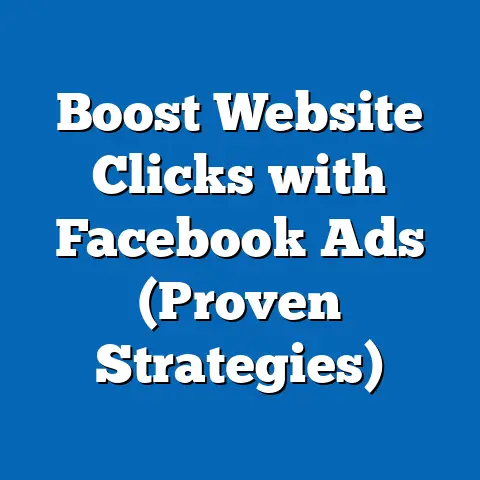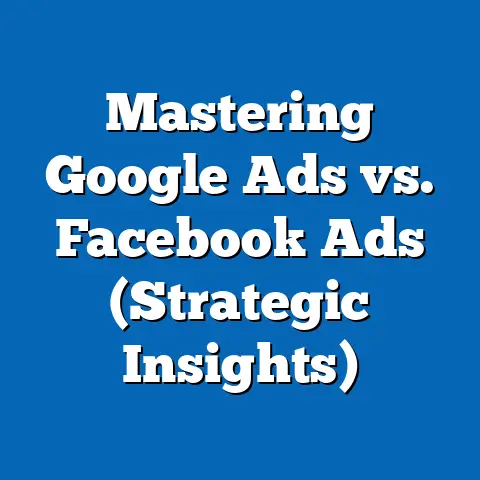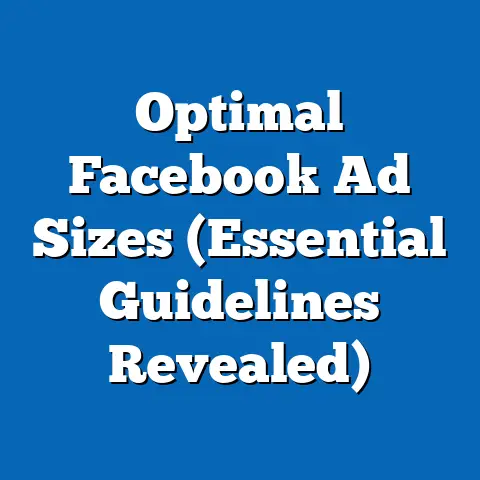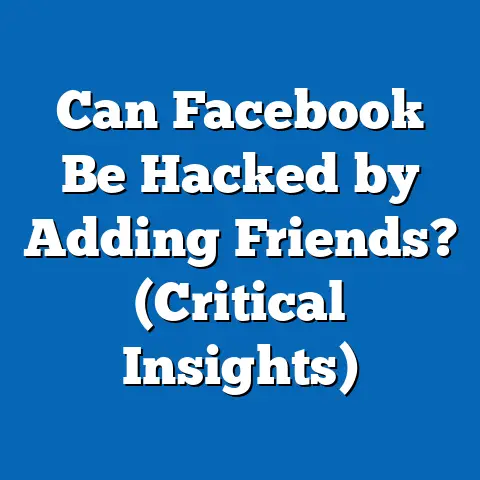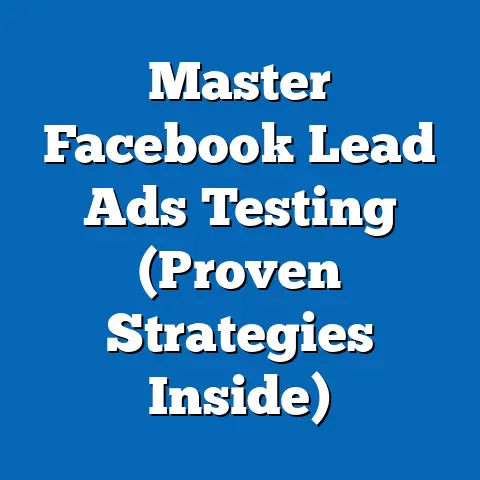Maximize Impact with Facebook Branded Content Ads (Pro Tips)
In today’s digital landscape, advertising is no longer just about shouting your message from the rooftops. It’s about whispering it in the right ears, building genuine connections, and fostering trust. And that’s where Facebook branded content ads come in. These ads aren’t your typical in-your-face promotions; they’re a subtle yet powerful way to leverage the influence of content creators and the authenticity of user-generated content.
I’ve seen firsthand how branded content ads can transform a struggling campaign into a roaring success. It’s not just about slapping your logo on an influencer’s post; it’s about creating a symbiotic relationship that benefits both the brand and the audience. When done right, these ads offer unparalleled value for money, delivering impressive reach, engagement, and ultimately, conversions.
Section 1: Understanding Facebook Branded Content Ads
So, what exactly are Facebook branded content ads? Let’s break it down.
Defining Branded Content Ads
Facebook branded content ads are a special type of ad that allows brands to amplify content created by influencers or other content creators. Think of it as a collaboration where the brand provides the product or service, and the creator uses their unique voice and style to showcase it to their audience. The beauty of this approach is that it feels less like a traditional ad and more like a genuine recommendation from someone the audience already trusts.
Unlike standard ads, branded content ads always feature a “Paid Partnership” tag, making it clear that the content is sponsored. This transparency is crucial for maintaining trust and credibility with the audience.
Mechanics of Branded Content Ads
The magic of these ads lies in the collaboration between the brand, the content creator, and Facebook’s ad platform. Here’s how it works:
- The Brand Chooses a Creator: The brand identifies an influencer or content creator whose audience aligns with their target market.
- Content Creation: The creator develops content (video, image, text, etc.) that features the brand’s product or service in an authentic and engaging way.
- Branded Content Tool: The creator uses Facebook’s branded content tool to tag the brand in their post. This signals to Facebook that it’s a paid partnership.
- Ad Amplification: The brand then uses Facebook Ads Manager to promote the creator’s post as an ad, expanding its reach beyond the creator’s existing audience.
- Targeting and Optimization: The brand leverages Facebook’s robust targeting options to ensure the ad reaches the most relevant users and optimizes the campaign for maximum impact.
Benefits of Branded Content Ads
I’ve seen firsthand the significant advantages of branded content ads compared to traditional advertising methods. Here’s why they’re such a game-changer:
- Increased Reach: By amplifying the creator’s content, brands can tap into a much wider audience than they could reach on their own. This is especially true if the creator has a loyal and engaged following.
- Enhanced Engagement: Branded content tends to generate higher engagement rates (likes, comments, shares) because it feels more authentic and relatable than traditional ads. People are more likely to interact with content created by someone they trust and admire.
- Improved Authenticity: In a world saturated with advertising, authenticity is king. Branded content, when done right, feels less like a sales pitch and more like a genuine recommendation. This can significantly boost brand credibility and trust.
- Targeted Reach: The ability to combine the creator’s audience with Facebook’s advanced targeting options allows brands to reach highly specific demographics and interest groups. This ensures that the ad is seen by the people who are most likely to be interested in the product or service.
- Social Proof: When people see their favorite influencer using and recommending a product, it provides social proof that can sway their purchasing decisions. This is particularly effective for new or lesser-known brands.
Real-World Examples and Statistics
Don’t just take my word for it. The data speaks for itself.
- Study: A Nielsen study found that branded content is 50% more memorable than traditional advertising.
- Example: A beauty brand partnered with a popular makeup artist to create a series of tutorials using their products. The branded content ads generated a 3x higher engagement rate compared to the brand’s standard ads.
- Statistic: According to a report by Influencer Marketing Hub, the influencer marketing industry is projected to reach \$16.4 billion in 2024, highlighting the growing importance of this approach.
Key Takeaway: Facebook branded content ads offer a powerful way to leverage influencer partnerships and authentic content to reach a wider audience, boost engagement, and build trust. Understanding the mechanics and benefits of these ads is the first step to maximizing your advertising impact.
Section 2: Setting Clear Objectives
Before diving headfirst into creating branded content ads, it’s crucial to take a step back and define your objectives. What do you want to achieve with this campaign? Without clear goals, you’re essentially shooting in the dark, hoping to hit something.
The Importance of Measurable Objectives
I can’t stress this enough: setting clear, measurable objectives is the foundation of any successful advertising campaign. It provides a roadmap for your efforts, allows you to track your progress, and ultimately, determines whether your campaign is a success or a failure.
Think of it like planning a road trip. You wouldn’t just jump in the car and start driving without knowing your destination, would you? You’d have a clear idea of where you want to go, how long it will take, and what you want to see along the way. The same principle applies to branded content ads.
Types of Objectives
Here are some common objectives that brands often pursue with branded content ads:
- Brand Awareness: Increasing the visibility and recognition of your brand among a specific target audience. This is a great objective for new brands or when launching a new product.
- Engagement: Driving interaction with your content, such as likes, comments, shares, and saves. High engagement indicates that your content is resonating with the audience.
- Website Traffic: Driving traffic to your website, where users can learn more about your products or services. This is a good objective if you want to generate leads or drive sales.
- Lead Generation: Capturing leads from potential customers who are interested in your product or service. This can be done through lead forms, email sign-ups, or other methods.
- Sales Conversions: Driving direct sales of your product or service. This is the ultimate objective for many brands, as it directly translates into revenue.
Aligning Branded Content with Business Goals
The key to maximizing ROI is to ensure that your branded content aligns with your overall business goals. This means carefully considering your target audience, your brand message, and the type of content that will resonate with your audience.
For example, if your goal is to increase brand awareness among millennials, you might partner with a popular lifestyle influencer who creates engaging video content on platforms like TikTok and Instagram. If your goal is to drive sales of a specific product, you might partner with a product reviewer who can provide an honest and unbiased opinion.
Examples of Successful Campaigns
Let’s look at a few examples of brands that successfully aligned their branded content with their business goals:
- Daniel Wellington: The watch brand partnered with a multitude of influencers across various niches to showcase their watches in different lifestyle settings. This strategy effectively increased brand awareness and drove sales among a wide range of target audiences.
- Sephora: The beauty retailer collaborated with beauty influencers to create makeup tutorials using their products. These tutorials not only showcased the products but also provided valuable content that engaged viewers and drove sales.
- Loot Crate: The subscription box service partnered with gaming and pop culture influencers to unbox and review their crates. This strategy generated excitement and anticipation among potential subscribers, leading to increased sign-ups.
Key Takeaway: Setting clear, measurable objectives is essential for maximizing the ROI of your branded content ads. By aligning your content with your business goals and carefully considering your target audience, you can create campaigns that deliver real results.
Section 3: Choosing the Right Influencers
Now that you have a clear understanding of your objectives, the next step is to find the perfect influencers to partner with. This is where the real magic happens. The right influencer can amplify your message, build trust with your target audience, and drive impressive results. The wrong influencer, however, can damage your brand reputation and waste your advertising budget.
Factors to Consider
Choosing the right influencer is not just about finding someone with a large following. It’s about finding someone who aligns with your brand values, resonates with your target audience, and has a proven track record of creating engaging content.
Here are some key factors to consider:
- Audience Alignment: Does the influencer’s audience match your target market? Look at their demographics, interests, and engagement patterns. A large following is useless if it’s not the right following.
- Engagement Rates: How engaged is the influencer’s audience? Look at their average likes, comments, and shares per post. High engagement rates indicate that the influencer has a strong connection with their audience.
- Content Style: Does the influencer’s content style align with your brand’s aesthetic and messaging? You want someone who can seamlessly integrate your product or service into their existing content without feeling forced or unnatural.
- Authenticity: Is the influencer genuine and trustworthy? Look for someone who is transparent about their partnerships and who provides honest and unbiased opinions.
- Past Performance: Has the influencer worked with other brands in the past? If so, how successful were those campaigns? Look for evidence of positive results and satisfied clients.
Step-by-Step Guide for Evaluating Influencers
Here’s a practical guide for evaluating potential influencers:
- Research: Use social media analytics tools and influencer marketing platforms to identify potential influencers in your niche.
- Analyze: Review their profiles, content, and engagement rates. Pay attention to their audience demographics, interests, and engagement patterns.
- Contact: Reach out to the influencers who seem like a good fit and request their media kit, which should include information about their audience, engagement rates, and pricing.
- Evaluate: Carefully review their media kit and compare their metrics to your own benchmarks.
- Negotiate: Discuss your campaign goals, budget, and creative expectations with the influencer.
- Contract: Formalize your partnership with a written contract that outlines the terms and conditions of the collaboration.
The Importance of Authenticity
In the world of influencer marketing, authenticity is paramount. Audiences are becoming increasingly savvy and can easily spot a fake or insincere endorsement. That’s why it’s so important to partner with influencers who genuinely believe in your product or service and who are willing to share their honest experiences with their audience.
Key Takeaway: Choosing the right influencers is crucial for the success of your branded content ads. By carefully considering factors like audience alignment, engagement rates, content style, and authenticity, you can find partners who can amplify your message, build trust with your target audience, and drive impressive results.
Section 4: Crafting Compelling Content
You’ve found the perfect influencer, set clear objectives, and now it’s time to create some killer content! This is where your creativity shines. The content is the heart and soul of your branded content ad, and it needs to be engaging, authentic, and relevant to your target audience.
Elements of High-Quality Branded Content
What makes branded content truly compelling? Here are some key ingredients:
- Storytelling: Craft a narrative that resonates with the audience and connects them emotionally to your brand.
- Visual Appeal: Use high-quality images and videos that capture attention and showcase your product or service in an appealing way.
- Value Proposition: Clearly communicate the benefits of your product or service and how it can solve a problem or fulfill a need for the audience.
- Call to Action: Tell the audience what you want them to do next, whether it’s visiting your website, signing up for your email list, or making a purchase.
Tips on Storytelling
Storytelling is a powerful tool for engaging audiences and building emotional connections. Here are some tips for crafting compelling stories in your branded content:
- Focus on the “Why”: Don’t just talk about what your product or service does; explain why it matters and how it can make a difference in people’s lives.
- Use Real People: Feature real customers or influencers who have had positive experiences with your product or service.
- Create a Narrative Arc: Start with a problem or challenge, introduce your product or service as the solution, and end with a positive outcome or transformation.
- Keep it Concise: Respect the audience’s time and attention span. Get to the point quickly and keep your stories short and sweet.
Maintaining Brand Voice
While it’s important to give the influencer creative freedom, it’s also crucial to ensure that the content aligns with your brand’s voice and messaging. This means providing the influencer with clear guidelines and expectations, while still allowing them to express their unique style and personality.
Key Takeaway: Crafting compelling content is essential for engaging audiences and driving results with your branded content ads. By focusing on storytelling, visual appeal, value proposition, and a clear call to action, you can create content that resonates with your target audience and achieves your campaign objectives.
Section 5: Leveraging Facebook’s Targeting Options
Creating amazing content is only half the battle. You need to make sure that content reaches the right people. That’s where Facebook’s powerful targeting options come into play.
Understanding Facebook’s Targeting Capabilities
Facebook offers a wide range of targeting options that allow you to reach highly specific demographics, interests, and behaviors. This is what makes Facebook advertising so effective. Here’s a breakdown of some key targeting options:
- Demographics: Target users based on age, gender, location, education, relationship status, and other demographic factors.
- Interests: Target users based on their interests, hobbies, and activities. This is a great way to reach people who are passionate about your niche.
- Behaviors: Target users based on their online behavior, such as their purchasing habits, device usage, and travel patterns.
- Custom Audiences: Create custom audiences based on your existing customer data, such as email lists, website visitors, and app users.
- Lookalike Audiences: Create lookalike audiences that are similar to your existing customers. This is a great way to expand your reach and find new potential customers.
Audience Segmentation
Segmenting your audience is crucial for tailoring your message and maximizing your ROI. By dividing your audience into smaller, more targeted groups, you can create ads that resonate with each segment’s specific needs and interests.
For example, if you’re selling a fitness product, you might segment your audience based on their fitness goals (weight loss, muscle gain, endurance training) and create ads that speak to each segment’s specific needs.
Custom and Lookalike Audiences
Custom and lookalike audiences are powerful tools for reaching your most valuable customers and finding new potential customers.
- Custom Audiences: Use your existing customer data to create custom audiences that you can target with your ads. This is a great way to re-engage existing customers, promote new products, or offer exclusive discounts.
- Lookalike Audiences: Use your custom audiences to create lookalike audiences that are similar to your existing customers. This is a great way to expand your reach and find new potential customers who are likely to be interested in your product or service.
A/B Testing Targeting Options
A/B testing is a crucial part of optimizing your targeting strategies. By testing different targeting options, you can identify which ones are most effective for reaching your target audience and driving results.
Key Takeaway: Leveraging Facebook’s targeting options is essential for maximizing the effectiveness of your branded content ads. By understanding the different targeting options available and segmenting your audience, you can create ads that resonate with your target audience and achieve your campaign objectives.
Section 6: Measuring Success and Adjusting Strategies
You’ve launched your branded content ads, and now it’s time to track your results and make adjustments as needed. This is where the magic of data comes into play. By carefully analyzing your ad performance, you can identify what’s working, what’s not, and how to optimize your campaigns for maximum impact.
Key Performance Indicators (KPIs)
Here are some key performance indicators (KPIs) to track the success of your branded content ads:
- Reach: The number of unique users who saw your ad.
- Impressions: The number of times your ad was displayed.
- Engagement Rate: The percentage of users who interacted with your ad (likes, comments, shares, clicks).
- Website Traffic: The number of users who clicked on your ad and visited your website.
- Lead Generation: The number of leads generated from your ad.
- Sales Conversions: The number of sales generated from your ad.
- Return on Ad Spend (ROAS): The amount of revenue generated for every dollar spent on advertising.
Analyzing Ad Performance Data
Facebook Ads Manager provides a wealth of data that you can use to analyze your ad performance. Pay attention to the following metrics:
- Cost per Click (CPC): The average cost you pay for each click on your ad.
- Cost per Impression (CPM): The average cost you pay for 1,000 impressions of your ad.
- Click-Through Rate (CTR): The percentage of users who saw your ad and clicked on it.
- Conversion Rate: The percentage of users who clicked on your ad and completed a desired action (e.g., making a purchase, signing up for your email list).
Making Data-Driven Adjustments
Based on your ad performance data, make adjustments to your campaigns to improve your results. Here are some common adjustments you can make:
- Refine Targeting: If your ads aren’t reaching the right people, adjust your targeting options.
- Optimize Content: If your ads aren’t engaging the audience, try different content formats, headlines, and visuals.
- Adjust Bids: If your ads are too expensive, adjust your bids to lower your costs.
- Pause Underperforming Ads: If some of your ads are performing poorly, pause them and focus on the ads that are driving results.
Key Takeaway: Measuring success and adjusting strategies is crucial for maximizing the ROI of your branded content ads. By tracking key performance indicators, analyzing ad performance data, and making data-driven adjustments, you can optimize your campaigns for maximum impact.
Section 7: Staying Updated with Trends and Best Practices
The world of Facebook advertising is constantly evolving. New features are introduced, algorithms change, and best practices shift. To stay ahead of the curve and maximize the impact of your branded content ads, it’s essential to stay updated with the latest trends and best practices.
Resources for Ongoing Education
Here are some valuable resources for ongoing education:
- Facebook Blueprint: Facebook’s official learning platform, which offers courses and certifications on various aspects of Facebook advertising.
- Industry Blogs: Follow leading industry blogs like Social Media Examiner, AdEspresso, and Neil Patel’s blog for the latest news, trends, and best practices.
- Webinars: Attend webinars hosted by industry experts to learn about new strategies and techniques.
- Industry Reports: Read industry reports from research firms like eMarketer and Forrester to stay informed about the latest trends and statistics.
Experimentation and Innovation
Don’t be afraid to experiment with new strategies and techniques. The best way to learn what works for your brand is to try new things and track your results.
Key Takeaway: Staying updated with the latest trends and best practices is essential for maximizing the impact of your branded content ads. By leveraging resources for ongoing education and continuously experimenting with new strategies, you can stay ahead of the competition and drive impressive results.
Conclusion
Facebook branded content ads offer a powerful way to leverage influencer partnerships and authentic content to reach a wider audience, boost engagement, and build trust. By understanding the mechanics and benefits of these ads, setting clear objectives, choosing the right influencers, crafting compelling content, leveraging Facebook’s targeting options, measuring success, adjusting strategies, and staying updated with the latest trends, you can maximize your advertising impact and get the most bang for your buck.
I’ve shared my pro tips and insights based on my own experiences and observations. Now it’s your turn to put these strategies into action. I encourage you to experiment, innovate, and share your experiences with branded content advertising. The world of social media marketing is constantly evolving, and the best way to succeed is to be curious, adaptable, and always learning. Good luck!

